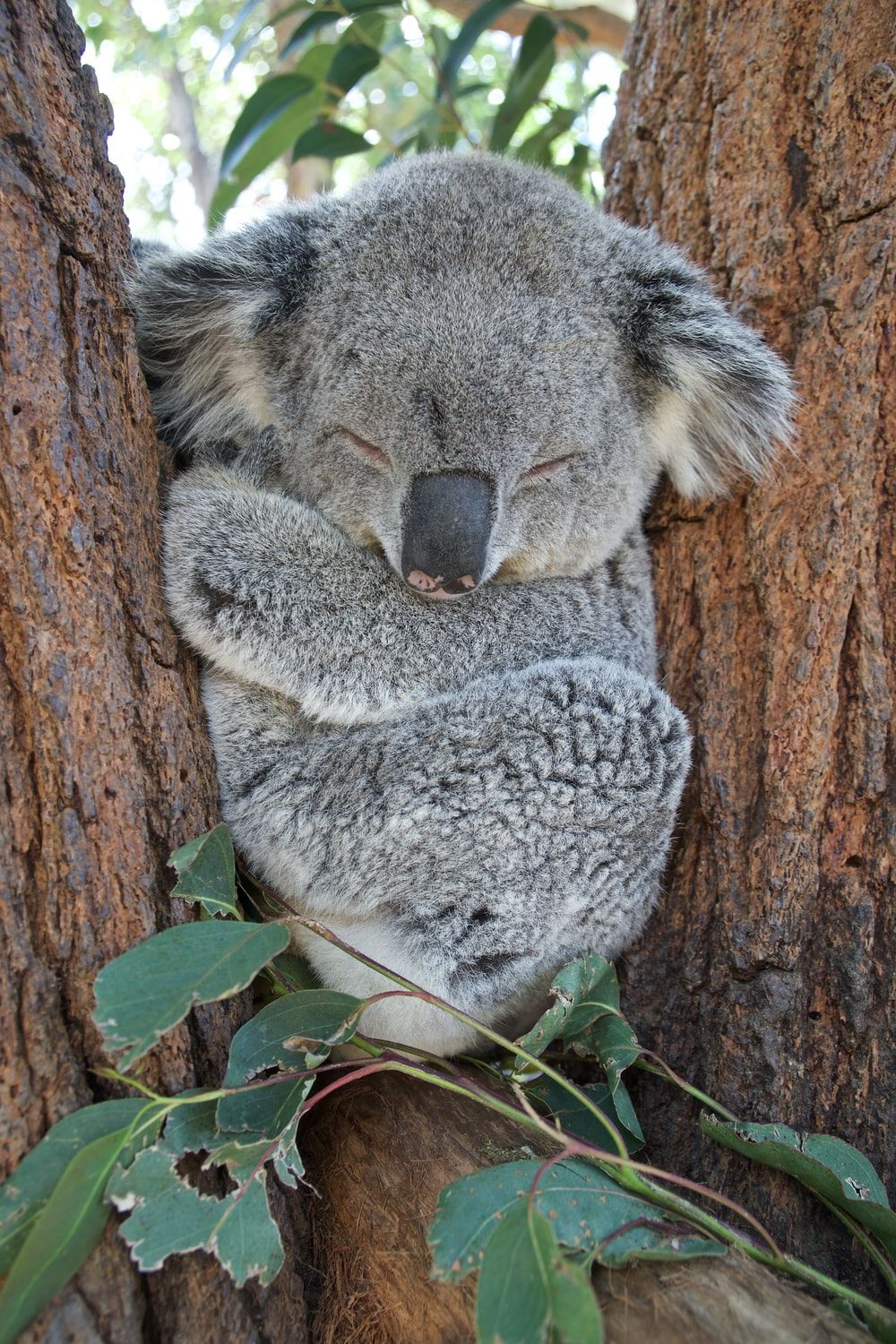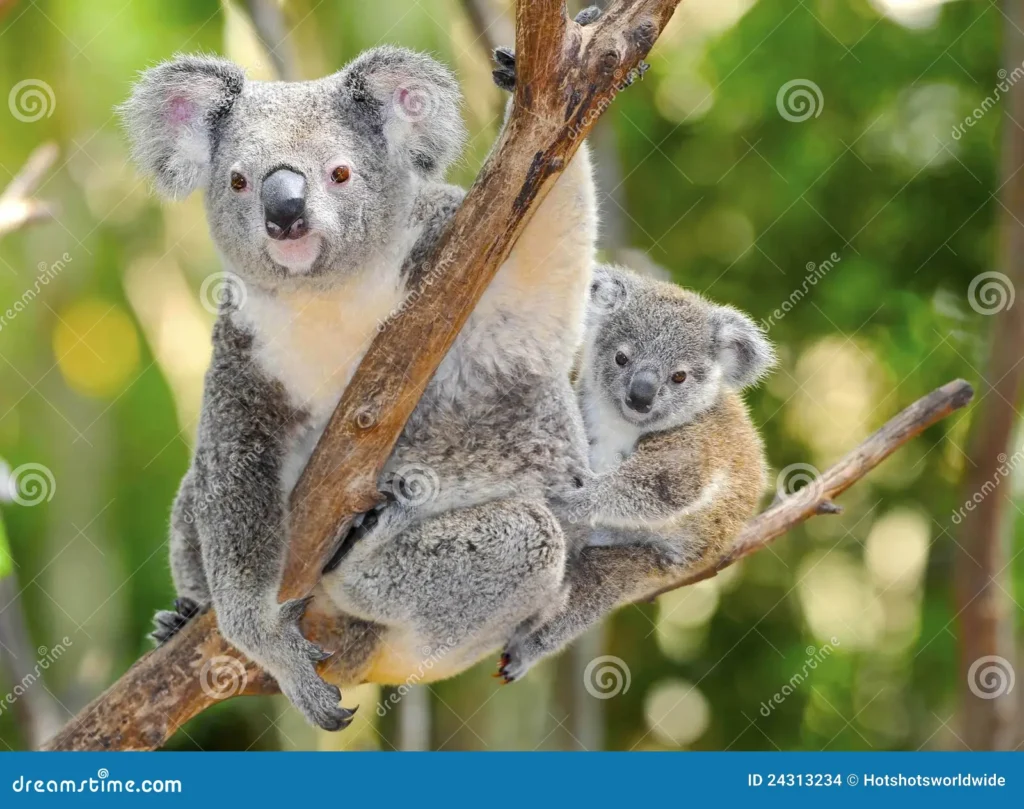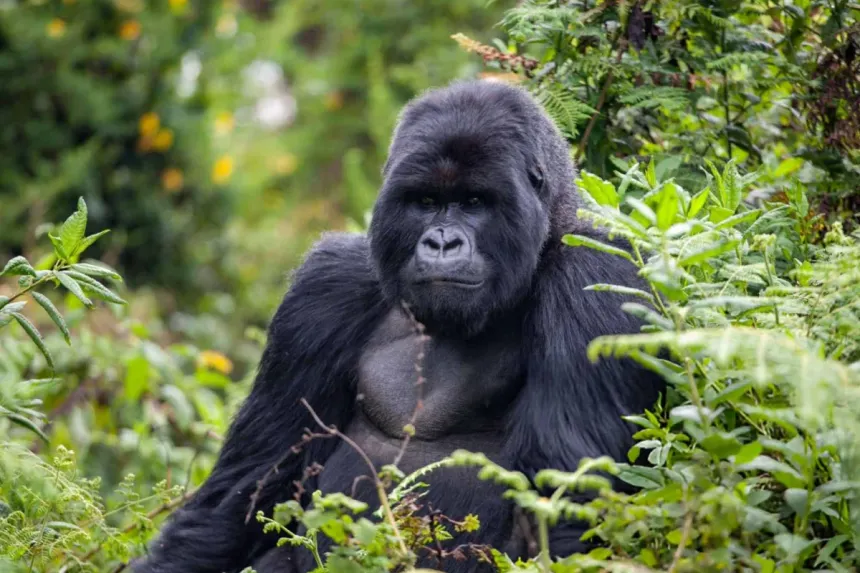Koala Bear: Sleepy Tree Dweller

The Koala Bear: Australia’s Sleepy Tree-Dweller
The koala, often affectionately but incorrectly called a “koala bear,” is one of the most iconic animals native to Australia. Despite their bear-like appearance, koalas are actually marsupials, a group of mammals known for carrying their young in pouches. With their round, fluffy ears, big black noses, and calm demeanor, koalas are easily recognized and deeply beloved across the world.
Koalas live in the eucalyptus forests of eastern and southeastern Australia, where they spend most of their lives in trees. These animals are perfectly adapted for tree-dwelling, with strong limbs, sharp claws, and rough pads on their hands and feet to grip branches securely. They are largely solitary and establish home ranges in specific trees that they rarely leave unless searching for food, water, or mates.
A koala’s diet is remarkably specialized. They feed almost exclusively on eucalyptus leaves, which are tough, fibrous, and low in nutrients. To digest this difficult food, koalas have a slow metabolism and a large cecum — a part of the digestive system that breaks down toxins and ferments fiber. As a result, koalas spend between 18 to 22 hours a day sleeping or resting to conserve energy. Despite their sleepy nature, koalas are very selective about which eucalyptus leaves they eat, choosing only certain species out of hundreds available.
Koalas reproduce once a year, usually in the summer. After a gestation period of about 35 days, a mother koala gives birth to a tiny, undeveloped baby called a joey, which crawls into her pouch. The joey remains in the pouch for about six months before emerging and riding on its mother’s back for another few months until it becomes more independent. This unique development process is typical of marsupials and essential for the koala’s early survival.
Although koalas are peaceful by nature, they can be quite vocal, especially males during mating season. Their calls, which include deep bellows and grunts, are surprisingly loud for such calm-looking creatures. These sounds are used to communicate over long distances in the dense forest.

Unfortunately, koalas face numerous threats in the wild. Habitat loss due to deforestation, urban development, and agriculture has significantly reduced the areas where they can safely live. They are also vulnerable to bushfires, particularly in regions affected by climate change. In addition, many wild koalas suffer from chlamydia, a disease that causes blindness, infertility, and even death if left untreated. Collisions with cars and attacks by dogs are also common threats in suburban areas. As a result of these dangers, koalas are now listed as vulnerable, and conservation efforts are underway to protect their habitats and ensure their survival.
Despite these challenges, koalas remain a symbol of Australia’s wildlife and are widely loved by locals and tourists alike. They are often featured in conservation campaigns and serve as ambassadors for protecting native species. Koala sanctuaries and rescue centers across Australia play a vital role in caring for injured or orphaned koalas and educating the public about their importance.
In conclusion, the koala is a truly unique and remarkable animal. From its eucalyptus-only diet to its slow-moving, sleepy lifestyle and maternal pouch-carrying habits, the koala represents the beauty and fragility of Australia’s ecosystems. By working to protect them, we not only save an iconic species but also contribute to the health and balance of the natural world they inhabit.



